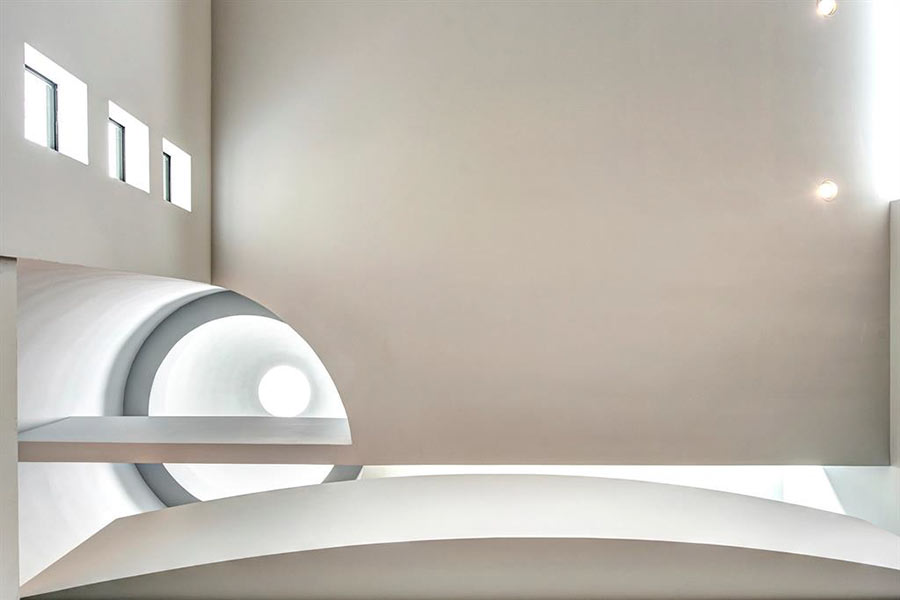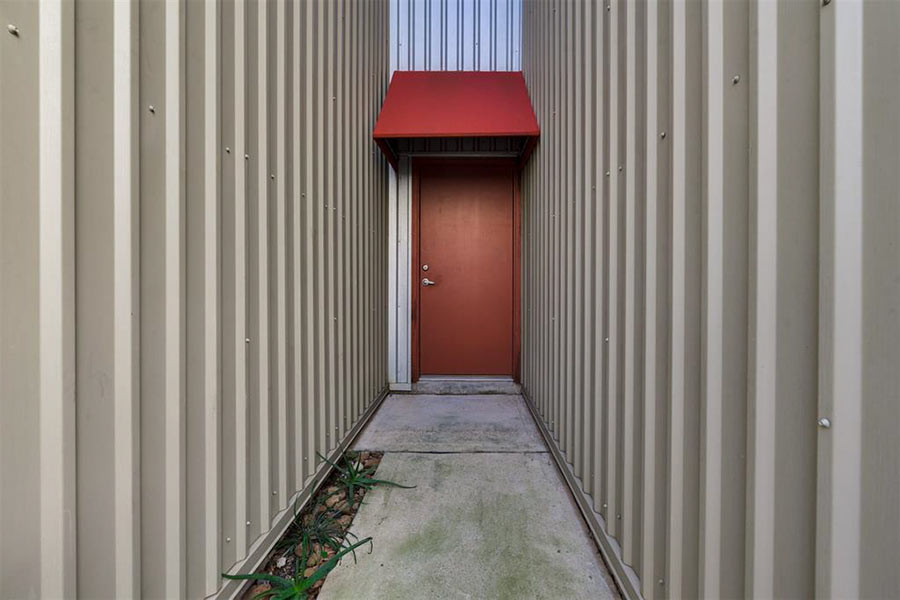HAZARDS OF THE WEST LOOP Except for a memorable afternoon of standstill traffic — and the maybe 1,500 gallons of gasoline that made their way through storm sewers to Galveston Bay — no major disaster resulted from that tanker spill 2 Fridays ago on Bellaire Blvd. below the West Loop. That’s better than the last time: “[L]ongtime residents of the area remember an incident in May 1976 when a truck carrying anhydrous ammonia slammed into a bridge railing on the connector from the West Loop to the southbound Southwest Freeway and fell onto the freeway below. Of those within 1,000 feet of the spill, six people died, 78 suffered serious injuries and 100 more were treated for their exposure. That tragedy played out only about a mile from the site of Friday’s accident. Thirty-four years after that terrible day, nothing has changed. The poorly engineered West Loop, as it approaches the 59, is one of the worst sites for accidents in the U.S. — yet it is also designated pathway for some of the most hazardous cargo in the world. More is transported on the vulnerable tracks that run through southwest Houston, divide West University and Bellaire, skirt along Afton Oaks, River Oaks and Memorial Park.” [West University Examiner]




“The poorly engineered West Loop, as it approaches the 59, is one of the worst sites for accidents in the U.S. — yet it is also designated pathway for some of the most hazardous cargo in the world.”
Poorly designed or stupidly driven? I admit segments of our freeways are old and don’t meet modern day design criteria, but design of original freeways (especially the look and all inner loop freeways in Houston) followed what was considered the California standard. It was the leading edge of freeway design around the world at its time and the planner for the loop and all inner loop freeways followed it.
Are the turns on those ramps strong? Yes, but the speed limit has been adjusted for it. There are warning signs for trucks especially. A solution to the problem is to completely rebuilt the interchange with higher, longer, more gradual ramps to allow higher speeds to move more safely. Removing trucks that carry hazardous material isn’t an option. If you do that, you couldn’t even drive trucks that carry soda drink syrup on the freeway. If a Coca-Cola truck did the same thing, you would have still needed a hazardous materials crew to clean it up.
Except for a memorable afternoon of standstill traffic — and the maybe 1,500 gallons of gasoline that made their way through storm sewers to Galveston Bay — no major disaster resulted from that tanker spill 2 Fridays ago on Bellaire Blvd. below the West Loop.
__________________________
Good thing no one tossed a cigarette near one of those sewers I guess.
there are so many minor accidents that occur weekly on the west loop northbound to the 59 south bound interchange. i am surprised the city hasn’t figured out a way mitigate the problem. literally, when an accident occurs there, it can back up traffic all the way south to Braeswood. eh—but everybody has now just accepted it i guess. heck, i just avoid the west loop going northbound altogether nowadays b/c i never know what i’m going to get that day.
What will the city do? They have nothing to do with that road.
How many vehicles, big trucks included, negotiate those same ramps, curves, turns and corridors every day without incident?
Not to place blame but maybe it’s the drivers who are at fault.
Seems to me there are fewer and fewer defensive drivers these days. And way more offensive ones.
I’ve been driving the streets of Houston since the sixties and a lot has changed.
As far as congestion, at least on the southbound side, if they would close access from the southbound feeder to the southbound mainlanes right at 610 & 59, that would seem to alleviate a lot of freeway congestion.
It’s an insane weave of cars criss-crossing three lanes.
The idea of allowing cars from the feeder to merge on, then take 59 north was probably to alleviate congestion within the galleria, but it’s resulted in a 12-hour-a-day, mile-long of backup of the west loop south, effectively negating the recent reconstruction of that freeway.
CBS News’ 1976 coverage of the anhydrous ammonia accident: http://www.youtube.com/watch?v=1OR7A5jWmDs
Jeff,
I agree with that. The on ramp from the feeder road southbound should only be allowed to get to US 59 southbound so no weaving can occur. There will still be a backup, but not as bad.
I though TxDOT was doing this when they laid this out. They probably have planned it that way, but was lobbied to change it.
Two major truck accidents in thirty-four years, the second with no loss of life? I agree with kjb — that sounds like a pretty darn good safety record. And a gasoline tanker spill anywhere in the city would probably have about the same environmental consequences and danger of fire.
I remember that day. My father’s office was at Post Oak Tower and he would spend hours on his phone looking out at that stretch. It was pretty horrific. That fiasco changed the wheres and whens hazardous materials can travel the city.
A big part of the backup was caused by the Westheimer exit just over the overpass. With the new longer exit ramp, alot of that is alleviated.
Major problem with this line of thought: this recent wreck wasn’t on the Loop. It was in the turning lane from the feeder onto Bellaire Blvd.
Aside from that, the 610-59 split has hosted a number of other memorable smashups besides the anhydrous ammonia truck. In just the last few years it claimed a gasoline tanker that rolled over and burned (seriously damaging the road surface), Emilio’s bus, and an 18-wheeler carrying several thousand cartons of eggs.
EMME,
You’re right about the new flyover. It has help dramatically.
Jeff still has a point about people getting on from the feeder and trying to get over to go on US 59 north. I think that was a major design flaw. They could extend the barrier so that the traffic coming from the feeder road can only go south on US 59. That would help a lot.
Sometimes I feel traffic engineers think the best of intentions with drivers and don’t realized that in most cases a selfish driver will attempt some stupid maneuvers. So many traffic problems can be linked to the selfish driver. Someone who almost misses an exit so they hurry up and cross a bunch of lanes. Even if an accident doesn’t occur, it can cause a ripple in traffic. Traffic engineers have the power to make recommendations in many locations to limit the choice of the selfish driver (particularly on freeways).
You can’t engineer stupidity out of people.
World Class.
I remember that day in 1976. I was seven years old and attending Chimney Rock Hall school a block north of 59 and about 100 years west of Chimney Rock.
All of a sudden we were all being evacuated and I mean fast, fast, fast. We didn’t even know what was going on. It was all hands on deck. Every teacher and administrative employee’s vehicle was pressed into service along with a couple of vans. They just piled all us kids into cars and high tailed it out of the area ASAP. We didn’t know where we were going or why. We just knew we had to be gone quick.
You really don’t want to be standing around when a cloud of ammonia drifts by. That is some nasty stuff. The cleaning stuff you buy at the store is bad enough even though it is highly diluted.
Slightly off-topic, but wasn’t Houston Oiler Jeff Alm also killed at that interchange?
iLackTact: Jeff Alm committed suicide there after the car he was driving hit the guardrail and his “long time companion” was sent flying out of the car and fell to his death 30 feet below. Jeff Alm took the shotgun he had in his car and after firing two shots in the air, shot himself in the face. Urban legend has it that there were other injuries as well but were not released to the public. But everyone in Houston knows someone who has a friend on the police force who saw the report.